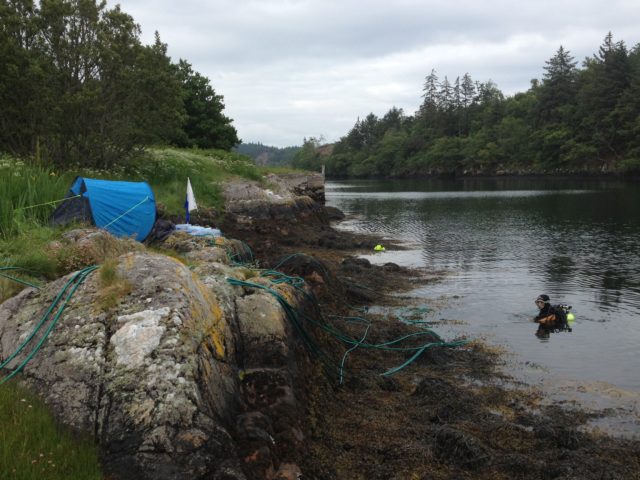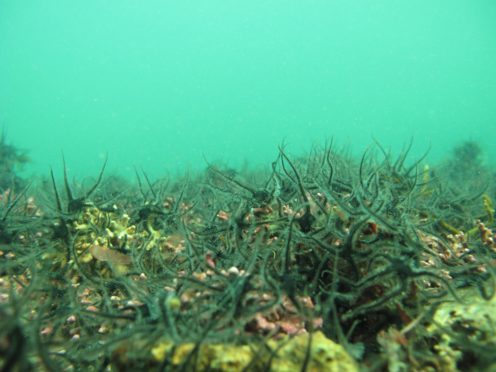Scientists believe carbon dioxide bursts from industry and land run off could cause irreparable damage to marine ecosystems after tests found acute levels of the gas cause starfish to dissolve.
A team of marine scientists conducted a four-day experiment at Loch Sween on Scotland’s west coast to measure the response to short-term carbon dioxide exposure.
Previously, tests had focused on the effect high levels of the gas had on individual plants or animals, leaving a gap in knowledge about how whole marine ecosystems respond to sudden influxes of carbon dioxide.
Researchers from Heriot-Watt University in Edinburgh and Glasgow University pumped water enriched with carbon dioxide into chambers placed over the coralline algal ecosystem and monitored the community’s response before, during and after exposure.

The experiment revealed acute exposure led to net dissolution, meaning calcified organisms such as the coralline algae and starfish were dissolving.
Heidi Burdett, Heriot-Watt University research fellow, said: “We found that there was a rapid, community-level shift to net dissolution, meaning that within that community, the skeletons of calcifying organisms like starfish and coralline algae were dissolving.
“If you think of pulses of carbon dioxide being carried on the tide to a particular site, it’s like a flash flood of carbon dioxide.
“Our continued monitoring of the site directly after the carbon dioxide exposure found recovery was comparably slow, which raises concern about the ability of these systems to ‘bounce back’ after repeated acute carbon dioxide events.”
She added: “Coralline algal ecosystems can be found in all the world’s coastal oceans and are particular common along the west coast of Scotland.
“Since coralline algae are highly calcified, we knew they would probably be quite sensitive to carbon dioxide.
“These beds have significant ecological and economical value: in Scotland, they act as nurseries for important catches like scallops, cod and pollock.”
Ms Burdett and her team believe more research is necessary but that carbon dioxide exposure should be taken into account by policymakers.
She said: “If a local authority or government agency is deciding the location of a new fish farm, forestry or carbon capture site, we should be looking at what marine ecosystems are nearby, and the potential for those ecosystems to be impacted by the new activities as a whole, rather than focusing on the impact on individual organisms.”
The research was published in the Marine Progress Ecology Series.
